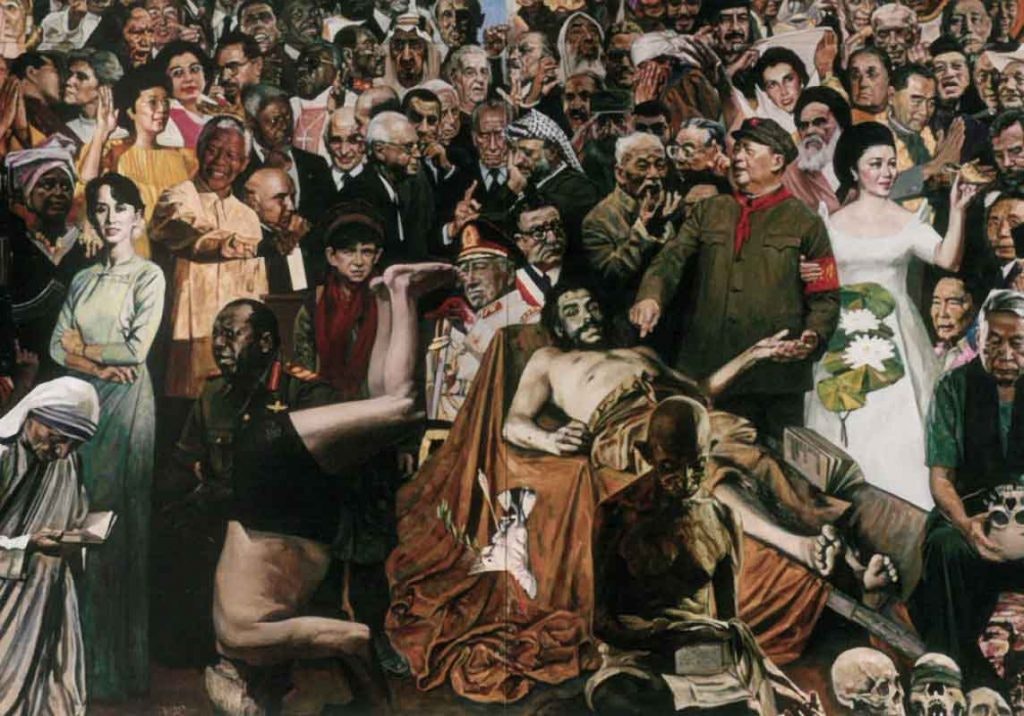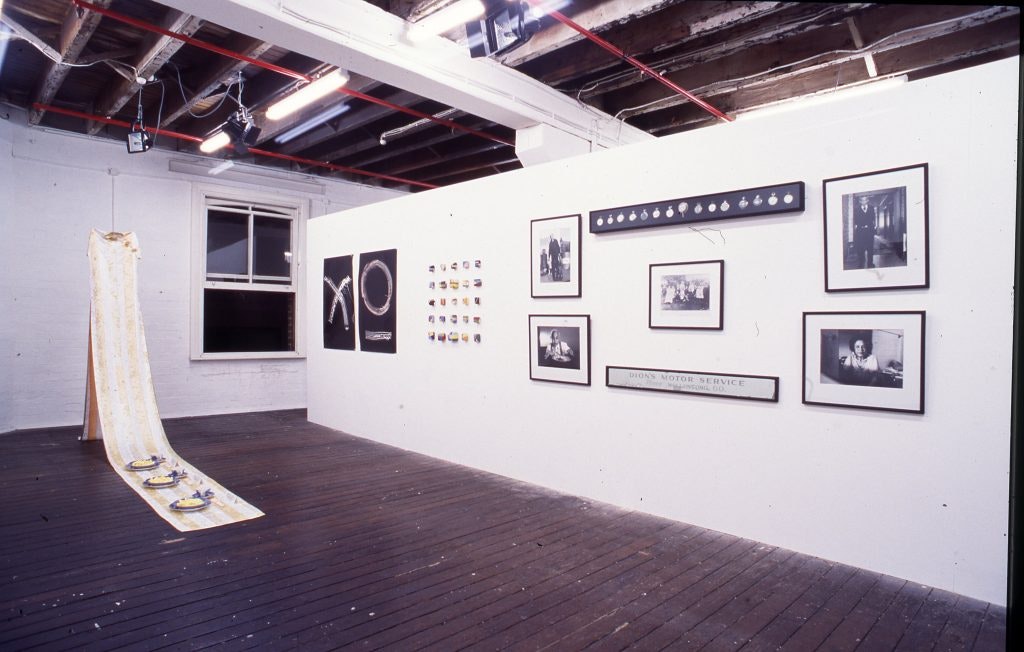Shen Jiawei: Zai-jian Revolution

When
27 September 2002 -
17 October 2002
Location
Gallery 4A, Asia-Australia Arts Centre (Hay Street)
181-187 Hay Street, Haymarket, Sydney
27 September – 17 October 2002
Zai-jian Revolution is Shen Jaiwei’s first major solo exhibition since arriving in Australia in 1989. The title of the exhibition, in Mandarin means “Goodbye Revolution” but also “to see you again”. The exhibition features eight major works including Standing Guard for the Great Motherland (1974) and Tasting Snow on the Wanda Mountains (1972) painted at the height of the Cultural Revolution.
Standing Guard for the Great Motherland (1974) is perhaps the most famous painting of Shen Jiawei’s during this period that survives. After approval by Jiang Quing, Mao Tse-Tung’s wife and the main cultural policy maker within the Revolution, and after slight modification to the portraits to confirm to party policy, this painting was reproduced in the millions and distributed throughout China.
Shen Jiawei is largely a self-taught artist who, like the other youth of his generation was sent to Northern China as labourers and border guards physically working for and protecting a cause. In Northern Manchuria in the 1970’s within a corps of other Army artists, Shen worked the land and developed artistic skills within the structure of the People’s Liberation Army. It was during this time that paintings such as Tasting Snow and Standing Guard for Our Great Motherland were painted.
His works are in significant international collections including the China Art Gallery and Museum of the Chinese Revolution, both in Beijing. His work is little known outside of China, though he was included in China: 5000 years at the Guggenheim Museum, New York and in Bilbao.
Born in Shanghai in 1948, he migrated to Australia in January 1989 and now lives in Sydney. In Australia Shen has established a reputation for accomplished realistic portraits that have featured in the Archibald Prize at the Art Gallery of NSW, Doug Moran Portrait Prize, and Mary McKillop Art prize. Most recently his work featured in the Federation 1901-2001 exhibition at the National Gallery of Australia, Canberra.
